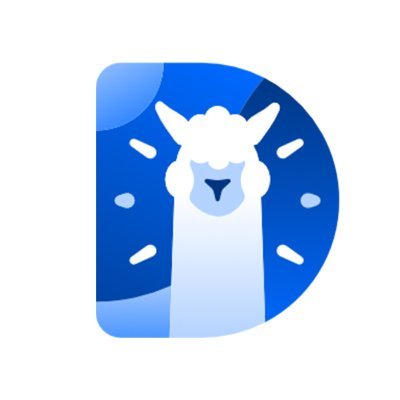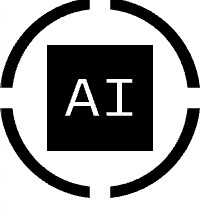


Prix de Distributed Autonomous OrganizationDAO
Que pensez-vous de Distributed Autonomous Organization aujourd'hui ?
À propos de Distributed Autonomous Organization (DAO)
#L'Importance Historique et Les Caractéristiques Clés des Cryptomonnaies
Les cryptomonnaies représentent une rupture radicale et significative dans le monde financier, ayant des répercussions bien au-delà de leur utilité en tant que nouvelles formes de monnaie numérique. Revenons sur l'histoire des cryptomonnaies et leurs rôles transformationnels dans l'économie numérique d'aujourd'hui, tout en soulignant les principales caractéristiques qui les distinguent des formes traditionnelles de monnaie.
Signification Historique
Les cryptomonnaies ont été introduites pour la première fois en 2009 avec le lancement du Bitcoin (BTC). Ce dernier a été conçu pour contourner les institutions financières traditionnelles, permettant des transactions peer-to-peer sans intermédiaires. Cet événement marquant a posé la première pierre de la création d'un système financier décentralisé.
Au fil des années, l'influence des cryptomonnaies a continué de croître, affectant non seulement l'économie mondiale, mais aussi la façon dont nous percevons la monnaie.
Caractéristiques Clés des Cryptomonnaies
- Décentralisation
La décentralisation est l'élément clé des cryptomonnaies. Contrairement à la monnaie fiduciaire, les cryptomonnaies ne sont contrôlées par aucune institution centrale, telle qu'une banque ou un gouvernement. Cela signifie que les transactions peuvent être effectuées sans qu'une tierce partie ne soit impliquée.
- Sécurité
Les cryptomonnaies utilisent une technologie de cryptage pour assurer la sécurité des transactions. Cette technologie, appelée blockchain, protège contre la fraude et permet l'immuabilité des transactions.
- Anonymat
Les transactions de cryptomonnaies peuvent offrir un niveau d'anonymat que les transactions financières traditionnelles ne peuvent pas fournir. Bien que toutes les transactions soient publiques et traçables sur la blockchain, les identités des parties impliquées sont cachées.
- Accessibilité
Les cryptomonnaies peuvent être accessibles à quiconque ayant une connexion internet. Cela signifie qu'elles peuvent être une solution pour les personnes non bancarisées dans le monde.
- Délai d'exécution rapide
Les transactions en cryptomonnaies peuvent être traitées beaucoup plus rapidement que les transactions fiduciaires traditionnelles. Cela est particulièrement utile pour les transactions internationales, qui peuvent souvent prendre plusieurs jours avec les méthodes traditionnelles.
En conclusion, les cryptomonnaies ont redessiné le paysage financier avec leur décentralisation, leur sécurité, leur anonymat, leur accessibilité et leur rapidité. Elles continueront probablement d'évoluer et de s'adapter pour répondre aux besoins changeants de notre économie numérique, tout en présentant de nouvelles opportunités et défis pour les consommateurs, les entreprises et les gouvernements du monde entier.
Rapport d'analyse IA sur Distributed Autonomous Organization
Prix de Distributed Autonomous Organization du jour en EUR
Historique des prix de Distributed Autonomous Organization (EUR)
 Prix le plus bas
Prix le plus bas Prix le plus élevé
Prix le plus élevé 
Quel est le prix le plus élevé de Distributed Autonomous Organization ?
Quel est le prix le plus bas de Distributed Autonomous Organization ?
Prédiction de prix de Distributed Autonomous Organization
Quel sera le prix de DAO en 2026 ?
Quel sera le prix de DAO en 2031 ?
FAQ
Quel est le prix actuel de Distributed Autonomous Organization ?
Quel est le volume de trading sur 24 heures de Distributed Autonomous Organization ?
Quel est le record historique de Distributed Autonomous Organization ?
Puis-je acheter Distributed Autonomous Organization sur Bitget ?
Puis-je gagner des revenus réguliers en investissant dans Distributed Autonomous Organization ?
Où puis-je acheter des Distributed Autonomous Organization au meilleur prix ?
Avoirs Distributed Autonomous Organization
Matrice de distribution des avoirs Distributed Autonomous Organization
Avoirs Distributed Autonomous Organization par concentration
Adresses Distributed Autonomous Organization par durée de détention

Prix de Distributed Autonomous Organization mondiaux
- 1
- 2
- 3
- 4
- 5
Nouveaux listings sur Bitget
Acheter plus
Où puis-je acheter des cryptos ?
Section vidéo – vérifier son identité rapidement

Notes Distributed Autonomous Organization
Bitget Insights




Actifs liés
Infos complémentaires sur Distributed Autonomous Organization
Détails de la crypto
En lien avec la crypto
En lien avec le trading
Actualités de la crypto






























